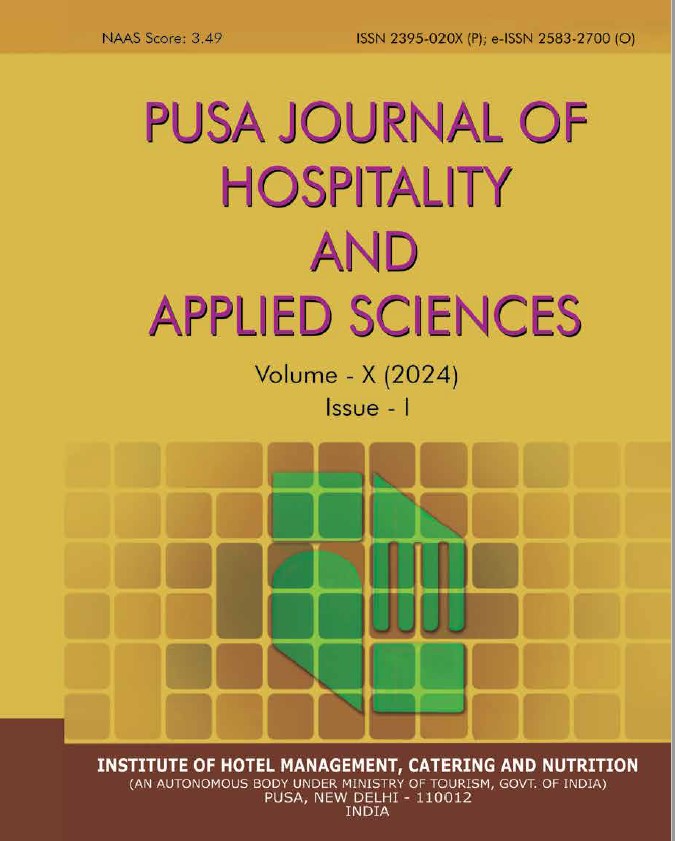Development Of Protein Rich Nan-Khatai
Keywords:
NDP Cal%, Healthy, Chickpea, Flaxseed, Watermelon SeedsAbstract
Background: The health and nutritional status of children is an index of national investment in the development of its future manpower. Malnutrition affects the child’s physical and cognitive growth and increases the susceptibility to infections while having an adverse impact on economic growth of the country indirectly. Maternal diet during pregnancy is one of the most important factors associated with infants’ birth weight and thus birth weight has often been used as an indicator of woman’s nutrition during pregnancy. Objective: The objective of the study was to develop a Protein-Rich Nan-khatai of which NDP Cal % should be more than 8%. Methodology: Experimental study was conducted to develop and check Protein Rich Nan-Khatai’s nutrititive value, sensory attributes and shelf life made from Chickpea Flour, Semolina, Flax Seeds, Watermelon Seeds and Jaggery. Results: Majority of Trained Panel extremely liked and majority of Semi-Trained Panel liked developed product attributes. Conclusion: This study highlighted that Protein Rich Nan-khatai will be a promising snack for both children and pregnant lady in terms of protein, fibre and anti-oxidants.
References
Aijaz, R. (2017). Preventing Hunger and Malnutrition In India. ORF Issue Brief, 3-8.
Biswas, R. (2017). A Comprehensive Review on Watermelon Seed Oil – An Underutilised Product. IOSR Journal Of Pharmacy, 1-6.
Chadha, R., & Mathur, P.(2015). Nutrition- A Life Cycle Approach. Delhi: Orient Black Swan.
Chattopadhyay, D. (2015). Semolina and it's benefits. 2.
Floris. (2016). https://floristxpress.com/blog/bakery-industry-in-india-innovations-trends and-challenges/
Gopalan, C., Sastri, R.B.V., & Balasubramanian. S.C. (2004). Nutritive Value of Indian Foods. National Institute of Nutrition. Indian Council of Medical Research. Hyderabad.
Handa, R., Ahamad, F., Kesari, K.K., & Prasad, R. (2008). Assessment of Nutritional Status of 7-10 year School Going Children of Allahabad District: A Review
https://www.researchgate.net/publication/242194437_Assessment_of_Nutritional_Status_ of_7-10_Years_School_Going_Children_of_Allahabad_District_A_Review
Jukantil, K. (2012). Nutritional quality and health benefits of chickpea. British Journal of Nutrition, 12-19.
Kajla, P. (2015). Flaxseed- a potential functional food. Association of Food Scientists and Technologists (India), 1857-1863.
Kalra, S. (2014). Semolina and it's product. 10-13.
Morris DH (2007) Flax—a health and nutrition primer, (4th ed.). www.flaxcouncil.ca
National Family Health Survey-3. (2017). Preventing Hunger and Malnutrition in India. ORF Issue Brief No- 182.
Rabetafika, H.N. (2011). Flaxseed Proteins: Food uses and health benefits. Food Science and Technology, 221-225.
Tabiri, B. (2016). Watermelon Seeds as Food: Nutrient Composition, Phytochemicals and Antioxidant Activity. International Journal of Nutrition and Foods, 140.
Wu, G. (2016). Dietary Protein Intake and Human Health. Royal Society of Chemistry, 1-2.
Yadav, D.W. (2016). Development and Storage Stability of RTE Bengal gram Flour based spices snacks- Chana Nibble. International Food Research Journal 23(1), 77-79.




